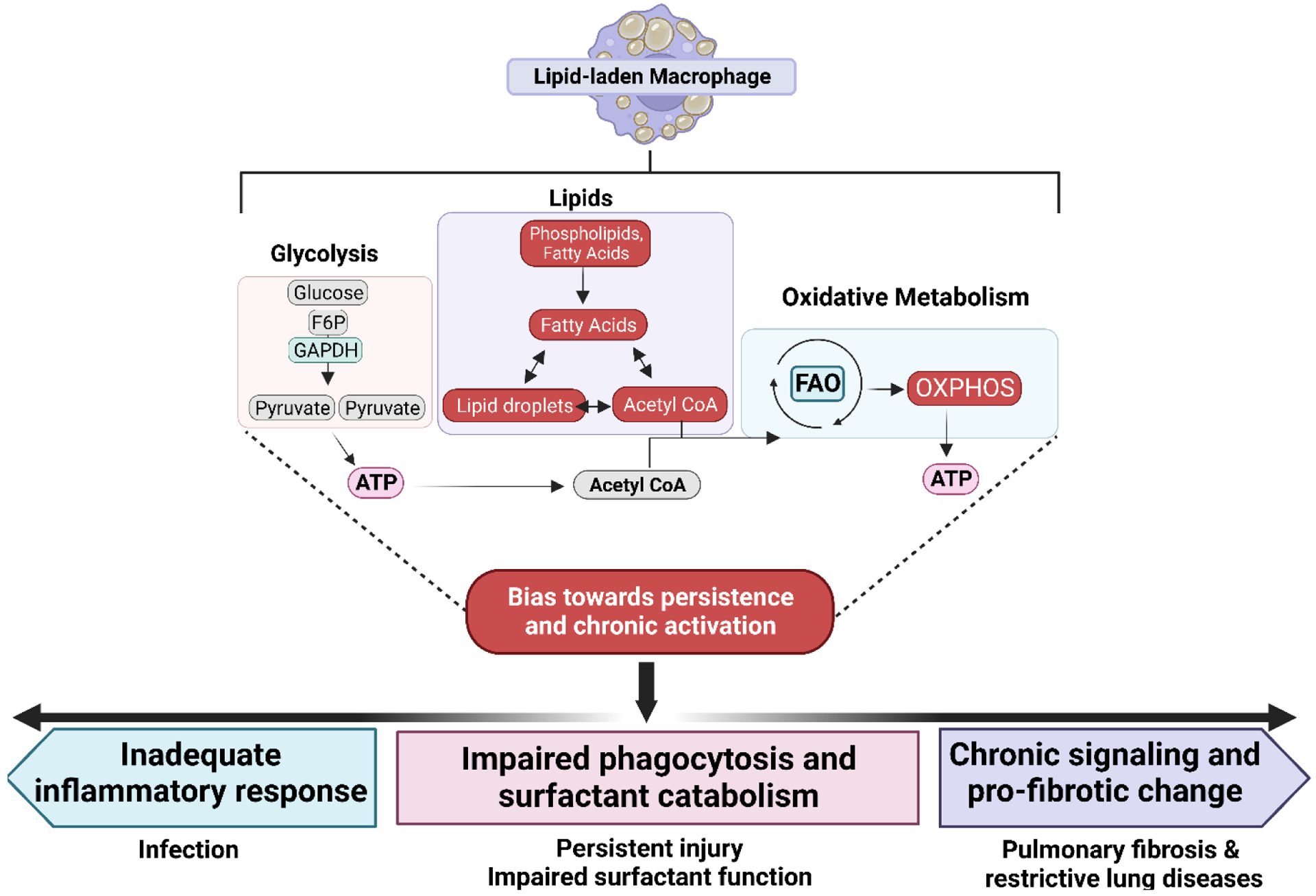Figure 3.

Persistence of lipid laden macrophages in the lung may lead to dampened inflammation and fibrotic change. Due to excess lipid accumulation in macrophages of this phenotype, it is proposed that there is significant reliance on fatty acid oxidation (FAO) rather than glycolysis which is typical of an acute inflammatory response. Increased reliance on these processes is represented by red boxes. The downstream effects of these changes are proposed to bias towards chronic activation, which may ultimately lead to an inadequate inflammatory response upon stimulation, priming the lung for susceptibility to infection and persistent injury. Furthermore, this may impair the phagocytic capacity of the macrophage, leading to both ineffective inflammation and poor surfactant catabolism (pale blue box), further negatively impacting lung function. Persistence of this phenotype may also contribute to persistence of this traditionally “anti-inflammatory phenotype,” leading to pro-fibrotic signaling and collagen deposition in the lung (purple box), leading to fibrosis or other restrictive lung diseases.
